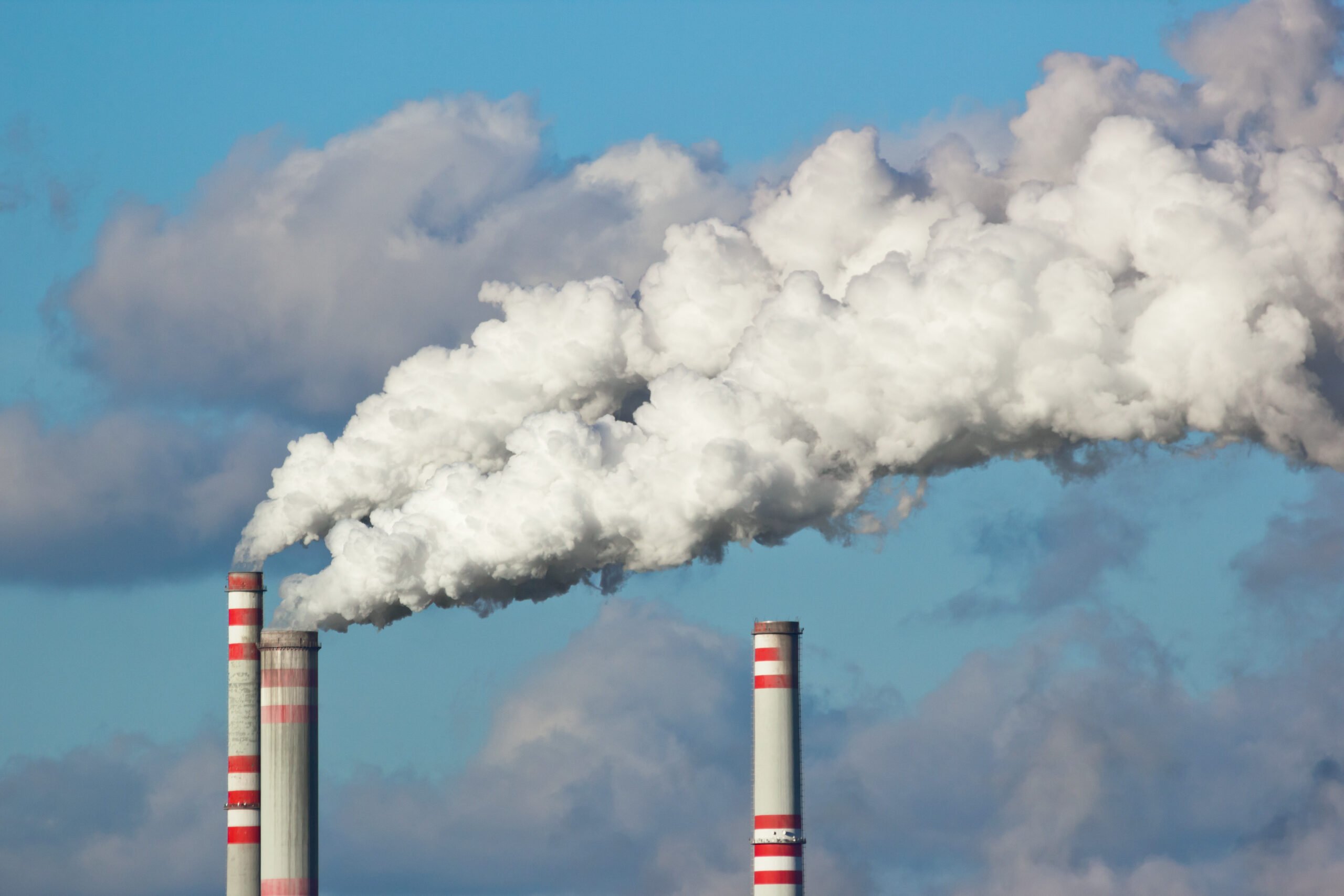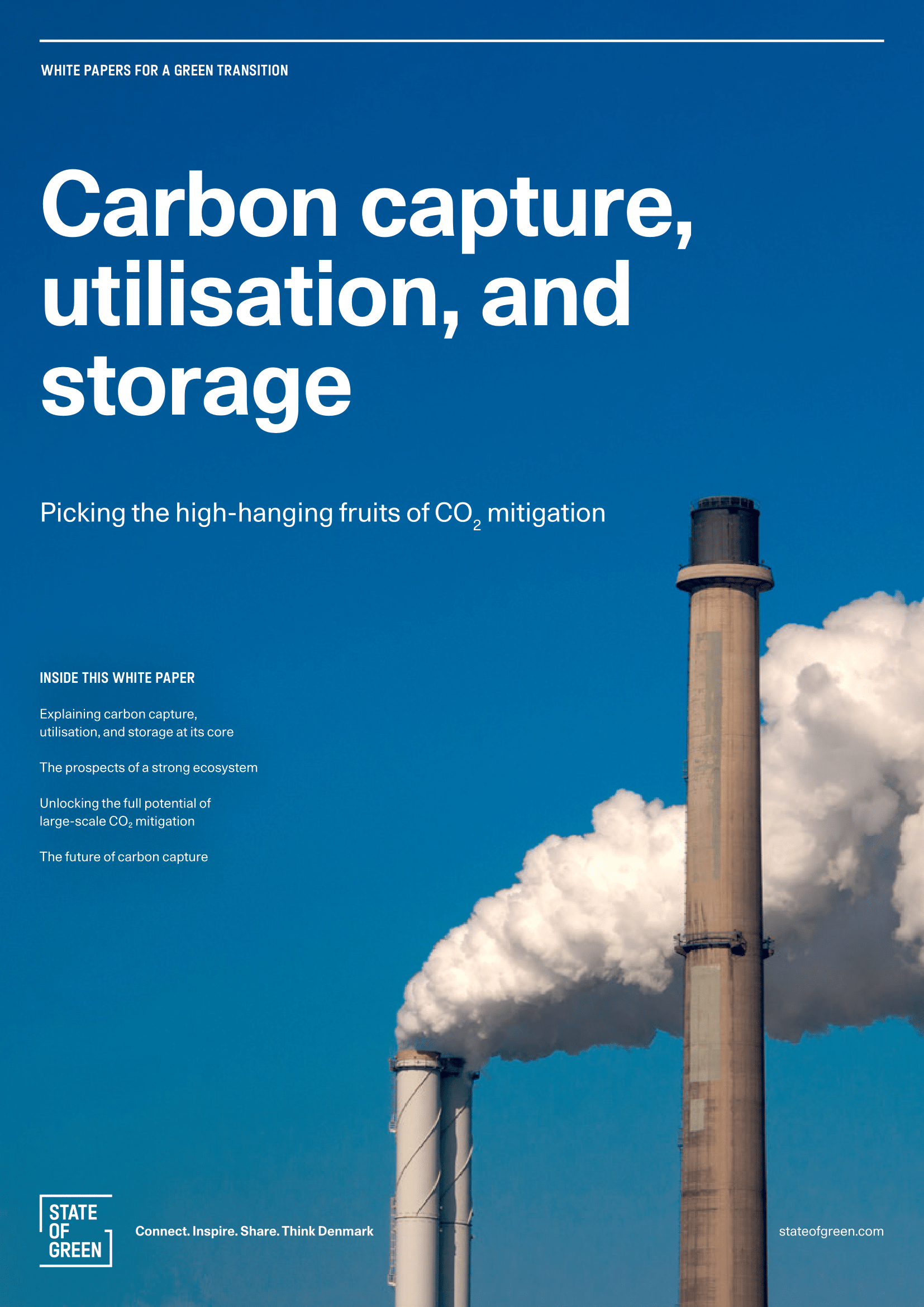Carbon capture, utilisation, and storage
Get a full overview on how carbon capture, utilisation, and storage (CCUS) can be used to accelerate the green transition, by unlocking the huge potential of large-scale CO2-mitigation
Explore the white paperNews
Carbon capture, storage and utilisation



Get a full overview on how carbon capture, utilisation, and storage (CCUS) can be used to accelerate the green transition, by unlocking the huge potential of large-scale CO2-mitigation
Explore the white paperThe National Geological Survey for Denmark and Greenland, GEUS, estimates that the Danish underground possess the capacity to store hundreds of times the nation’s annual CO2 emissions. This makes the Danish underground one of the most suitable for storing CO2 in Europe.
According to the broad political agreement on enhancing the regulatory framework for CCS in Denmark from 2023, it has been determined, based on studies conducted by GEUS, that there are five specific areas on land in Denmark with highly advantageous conditions for CO2 storage.
These areas include Gassum, Havnsø, Rødby, Stenlille, and Thorning. Discussions have already taken place with the respective municipalities and local communities regarding these designated areas.
The Danish Energy Agency opened the tender in December 2023 and had by the application deadline of 24 January 2024 received nine applications covering all five of the designated areas.
“The interest and the volume of applications affirm Denmark’s potential to become an excellent location for CO2 storage. Within the Danish Energy Agency, we are reviewing the applications received through the exploration permit tender for CO2 storage. Our primary objective is to ensure the responsible and secure storage of CO2,” says Henrik Sulsbrück, Head of Division for CCS and Arctic in Centre for Subsoil Resources and Risk Preparedness at the Danish Energy Agency.
Related news: Denmark and France land new Co2-storage arrangement
The Danish Energy Agency expects to finalise the processing of applications in June 2024. Hereafter, the Minister of Climate, Energy, and Utilities, Lars Aagaard, will inform the Climate, Energy, and Utilities Committee and grant exploration permits for the designated onshore areas.
Once the Minister of Climate, Energy, and Utilities issues the licenses in June, the selected companies will commence thorough examinations and preparations.
If the investigations conclusively demonstrate that the underground is suitable and storage can be conducted safely and responsibly, the license holder may apply for permission to commence storing CO2.
During the exploration period, it may also become evident that some areas are not suitable for CO2 storage. In such cases, the respective area will naturally not be utilised for storage.
The Danish Energy Agency anticipates completing the processing of applications in due course, with the aim of announcing exploration permits for the specified onshore areas by June 2024.
Read the original article at: Large potential for storing CO2 in the Danish underground